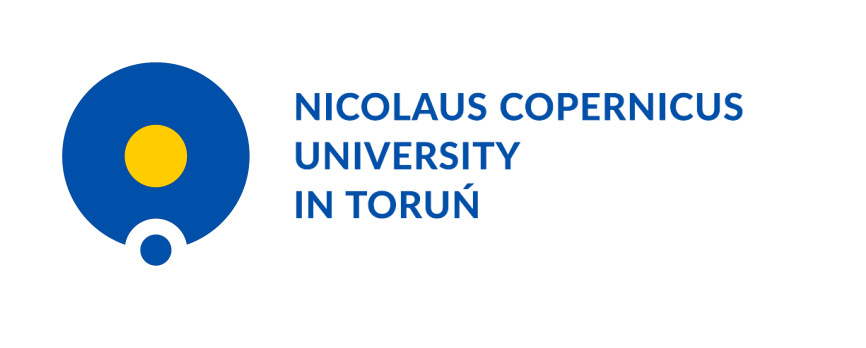Polymer Science and Multifunctional Nanomaterials
Polymer Science and Multifunctional Nanomaterials in the areas: science of polymers, multidisciplinary materials research and applied chemistry. Team leader: dr hab. Wojciech Kujawski, prof. UMK
Scientific activities of the research area “Science of polymers and multifunctional nanomaterials” focus on three interrelated themes:
- Preparation and characterization of new polymer materials, in particular mixtures and micro and nanocomposites based on synthetic and natural polymers intended mainly for biomedical, cosmetic and packaging applications.
- Modification of polymeric and ceramic membranes to obtain materials with new or improved separation and transport properties.
- Multifunctional materials and nanomaterials, especially carbon nanomaterials (including graphene, nanotubes, nanohorns, nanodiamonds). The research aims at finding potential applications of new nanomaterials as e.g. drug carriers, catalysts, sensors, surface coating of controlled wettability or controlled toxicity.
Chemistry of polymers and multifunctional materials, including ceramic and carbon materials, is now a fast-growing scientific discipline. Modification of polymers by chemical and physical methods, e.g. photochemical surface modification, grafting and photo-(co)polymerization processes lead to photosensitive compounds and compounds with biological activity, e.g. bactericidal agents. The research will be carried out on biodegradable and photodegradable as well as cross-linked systems (i.e. gels obtained in the process of fast photopolymerization with the use of multifunctional monomers). The aim of the research is also to develop a method of preparation of nanocrystalline polysaccharides enriched in reactive aldehyde groups capable of effective polymer crosslinking, and subsequently to obtain new materials and examine their physicochemical properties. An indirect objective is also to develop an efficient method of obtaining polysaccharides from plant waste and waste paper. Modified polysaccharides will be tested for their applicability in drinking water treatment. Polyolefin composites with inorganic fillers, designed for the manufacture of piezoelectric sensors in microelectronics, constitute a separate group of materials under research.
A membrane is a partition between two phases that allows selective or preferential transport of selected components of mixtures by using an appropriate stimulus (mechanical, chemical or electrical). The need to produce new membrane materials and modify the existing ones is a source of inspiration for many researchers. There are attempts to modify the proven membrane materials, which leads to their improved separation and transport properties. The manufacture of materials with controlled properties is significant from an application point of view. This “control” of the properties can be carried out by connecting suitable particles (e.g. silanes) to material surfaces, e.g. inorganic ceramic materials. The research involves the design and manufacture of innovative hybrid (organic-inorganic) materials having predictable material and transport/separation properties. Recognizing and understanding the mechanism of modification (functionalization) conducted in various experimental conditions will constitute a very important task. Prepared materials will be tested in selected separation processes. A very interesting element of the research is the planned immobilization of enzymes on the surface of the ceramic substrate and determining how the surface that has been modified in this way changes its physicochemical properties. Model theories will also be used to describe transport and separation phenomena.
Studies on carbon nanomaterials are conducted into their application in adsorption, wetting, sensors, and biological activity. Additionally, theoretical calculations involving computer simulations and quantum calculations related to interphase phenomena are carried out. New nanomaterials as carriers of drugs are one of the most explored areas of so-called nanomedicine today. Carbon materials as biocompatible are of great interest in this respect. Therefore, the team plans to study, in collaboration with centres in Poland and abroad (e.g. in Japan), the use of e.g. nanohorns or nanodiamonds in terms of their ability to accumulate – release drugs. Research on sensors or the application of carbon nanomaterials in energy storage mainly aims at working on the application of graphene and its modified forms. Research in this area is conducted in collaboration with reputable domestic and foreign centres (mainly in Korea). The third group of tests involves the manufacturing of surfaces with controlled wettability. The application of various methods of depositing nanomaterials on surfaces and their further modification aims at the manufacture of superomniphobic surfaces. The experimental research in all these areas is accompanied by theoretical work, mainly quantum calculations and computer simulations.
As part of this research field, close collaboration is planned with specialists from the Faculty of Biological and Veterinary Sciences, the Faculty of Physics, Astronomy and Informatics and organic chemists from the Faculty of Chemistry.
The biological part of the emerging field research will address the assessment of cytotoxicity of polymeric materials, biomaterials and nanomaterials with potential biomedical relevance. The assessment of cytotoxicity will be carried out on commercially available cell lines (human skin fibroblasts, 3T3 mouse fibroblasts, lung epithelium, etc.) under ISO 10993 for tests on materials that come into contact with human tissue cells. Screening based on the metabolic test (MTT test) and the neutral red uptake(NRU) phototoxicity test will enable to determine the degree of toxicity or its absence and/or to determine the effective concentration of EC50 experimentally. More detailed tests will enable to identify possible cell damage mechanisms. Confirmation of the absence of the cytotoxic effect for a given material will enable its further implementation in biomedical applications. Understanding the nature of damage in cells may, in turn, result in deliberate and targeted modification of materials to make them biocompatible.
Organic chemistry has specific challenges ranging from the synthesis of relevant compounds with specific properties (absorption, fluorescence, ion bonding and others) to design the geometry of molecules so that they can be incorporated into polymers, membranes or surfaces of solids. Such operations result in the modification of materials with the possibility of optimizing their properties for analytical (molecular recognition), catalytic (deposition on solids) or for conducting processes under flow conditions. Research combining supramolecular chemistry with physicochemistry of polymers and nanomaterials will lead to the understanding of the mechanisms that will allow to improve current materials and to design them more precisely.
Dr hab. Wojciech Kujawski, prof. UMK – born in 1955 in Ostróda. As a laureate of the Chemical Contest organized by Prof. Antoni Swinarski, he began university studies in 1974 in the field of applied chemistry at the Faculty of Mathematics, Physics and Chemistry of the Nicolaus Copernicus University. After graduation, he started his doctoral studies in 1979 under the supervision of Professor Anna Narębska. He got employed in 1983 in the Department of Physical Chemistry (at present Department of Physical Chemistry and Polymer Physicochemistry). He defended his doctoral dissertation entitled “Isothermal transport of ions and water through the Nafion 120 membrane in NaOH solutions based on linear unbalanced thermodynamics” in 1985. He was awarded a degree of doctor habilitated both in Poland (2008 – for his works related to the separation of liquid mixtures using the vacuum pervasion technique) and in France (2011 – for his works describing the equilibrium and transport properties of ion exchange membranes in contact with water-organic mixtures). He has been an associate professor in the Department of Physical Chemistry and Physicochemistry of Polymers since 2012 and Head of the Department since 2017. The research activity of Prof. Kujawski is related to the equilibrium, separation, and transport properties of polymeric and ceramic membranes as well as to membrane modifications to obtain materials with new or improved properties. He has published over 130 scientific papers (Web of Science), has been actively collaborating with many foreign centres, including France, Austria, Spain, Australia, the United Arab Emirates, Jordan, and Ukraine. The results of his works have been repeatedly quoted in the publications of other authors and presented at national and international scientific conferences. Prof. Kujawski has been repeatedly awarded for his achievements in scientific research and organizational activities by the Rector of the Nicolaus Copernicus University. He is the Chair of the NCU Council for Innovation and Implementation. He is a co-founder of the Polish Membrane Society and has been its President for the 2015-2018 and 2019-2022 terms. He is also a member of the European Membrane Society. Prof. Wojciech Kujawski has promoted 4 doctors and is now supervising 4 doctoral candidates. He has also been implementing grants from the National Science Centre, the National Centre for Research and Development and NATO.


 ul. Gagarina 7, 87-100 Toruń
ul. Gagarina 7, 87-100 Toruń